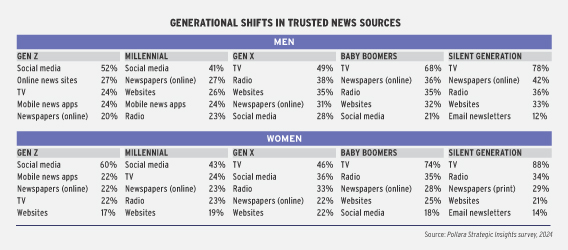
Social media is breathing new life into employers’ pension communications, helping to make the benefit resonate with different audiences and offering organizations a far wider footprint than traditional channels.
In some ways, the coronavirus pandemic was one of the key drivers of increasing the use of social media in workplace communications, says Jeff Pekar, director of employee experience at WTW, noting the rise of channels like Microsoft Teams, Slack and Zoom to enhance internal communications solidified the value social media offers to employers.
Many companies now have internal accounts on popular channels such as Facebook or TikTok, he adds. “It’s a powerful medium employers realize can help them disseminate their messaging to a wider audience, while controlling the narrative.”
Meeting people where they’re at
It’s challenging to engage younger generations in matters related to retirement and savings, says Craig Worden, president and chief innovation officer of Pollara Strategic Insights.
“You have to reach these demographics where they live — and social media is a major part of gen Z and millennials’ lives. It’s in their home and, in terms of their mental space, that’s where they are for a lot of the day. They’re not using traditional media.”
Read: Lululemon’s use of video, social media in benefits communications results in award win
A recent survey by Pollara found social media was the No. 1 source of information for more than half of gen Z respondents and two-fifths of millennials, whereas roughly a quarter of gen-Xers and baby boomers said they get their news primarily from this medium. Indeed, social media has overtaken legacy media as the most important news source for younger Canadians, says Worden, and this trend is trickling down to other areas.
Jason White, manager of public affairs at the OPSEU Pension Trust, agrees, noting social media is giving the pension fund a window into the language of younger age groups, enabling it to tailor its messaging in a way that’s most likely to reach this audience.
In 2023, the OPTrust ran a campaign for Financial Literacy Month that included creating short-form videos directed at younger plan members. The organization is also micro-targeting its email outreach by generation, drawing from social media practices that strive for succinct, jazzier titles; shorter, direct formatting; and strategic image placement.
“It’s incumbent upon us to find a way to reach [members] where they are and engage them in a way they want to be engaged. We’re always looking at ways to do that . . . so they can be more informed.”
Read: OPTrust promoting financial literacy with enhanced communications, DB pension education program
Social media forces employers to be more targeted when sharing their messaging by putting more thought into the intended audience and tailoring it to their sensibilities, says Pekar, noting it’s also important for employers to reach people from different walks of life. For example, construction or manufacturing workers don’t always have access to a computer, so it may be more beneficial to engage them through their smartphones using short videos or using quick response codes to link to different information.
The OPTrust is also using social media tactics to connect with plan members as they approach retirement, adapting its messaging to take a more emotional and social tone with financial information. As a result, says White, the pension fund has improved its engagement metrics for this cohort.
There’s a misperception that social media is just for young people, says Pekar. “Just because somebody is older, it doesn’t mean they’re afraid of new technology because, the fact is, social media isn’t so new anymore and one of the key considerations is around audience segmentation.”
Breaking through the noise
Alongside the economic uncertainty of the post-pandemic period, employees are facing continued challenges around the cost of living and saving for the future, with many looking to their employers for financial information.

The biggest benefit the OPTrust provides its members is peace of mind, says White, so plan members don’t typically engage with their pensions until they’re approaching retirement. “We see there’s an important value in maintaining contact throughout a member’s entire career, so that information can travel both ways. We . . . want to keep them updated on their pension and what it’s going to mean for them . . . [so they] can factor that into their retirement preparedness.”
Read: Should employers use social media to communicate pension, benefits?
It’s critical for the OPTrust to find a way to break through the noise to keep plan members interested and engaged so they’re receiving vital information for their financial health, he adds. “Part of that [service] is targeting various demographics . . . and providing information that’s specific to them in those moments.”
Lauren Bailey is an associate editor at Benefits Canada and the Canadian Investment Review.
